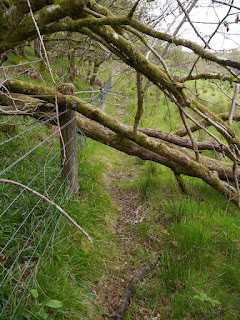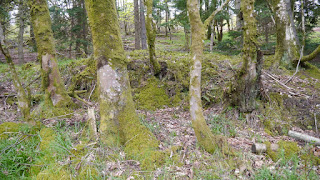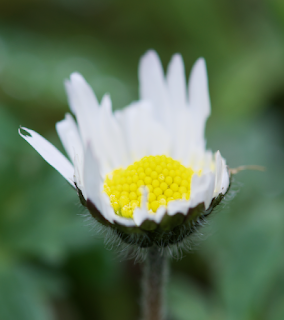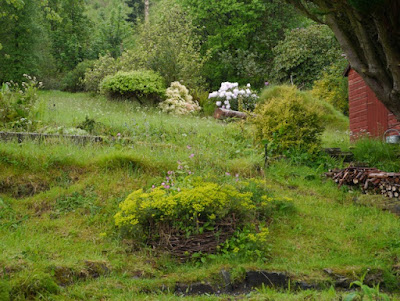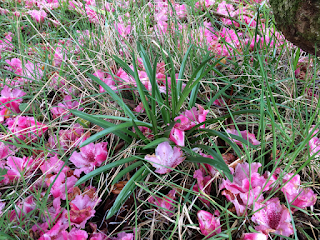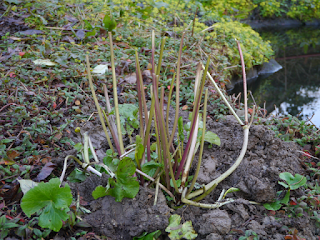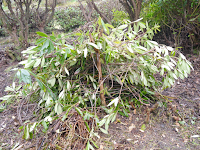The old, accidentally burnt out rowan near the top of the garden is still standing. It can be wobbled a little but the lignin in what's left of the old trunk is not giving way. Not yet.
As you can at the bottom of the picture, there is still a live shoot, a young a tree in its own right really, is growing. I wondered last year if it would survive to leaf and flower another year. It seems it will:
Even more amazingly, several small shoots are growing alongside this main one at the base of the old trunk and apparently right out of the fungus, Root Rot/Heterobasidion annosum, that was killing off the older parts. Talk about the will to live!
Bluebells are not flowering here yet but their leaves are popping up in various parts of the garden, including just downhill of the old rowan.
 |
| Leaves of Hyacinthoides non-scripta |
They are also springing up under Deep Pink whose flowers are falling.
Orpine (Sedum telephium) was doing well behind its chicken wire protection last year. It was fleshing out nicely this year too and then the vandal deer found a way in behind through the cotoneaster that it grows under. Grrr! 😠 So I've chicken wired behind it as well now.
The King Cups that a neighbour gave me on Wednesday, which were flowering well when I planted then had all their flowers and most of their leaves scoffed within forty-eight hours. Such depredations, even just of flowers that one isn't going to eat, can be a bit soul-destroying so I sympathise with people who have to cope with their growing food supply being eaten by other animals. I've made a chicken wire cage for the King Cups now too. Hey ho.
It is deer, both red and roe, that slow down forest regeneration in other parts of Scotland. There are none of their natural predators (wolves and lynx, for instance) left that would keep their numbers down a bit. There is talk of reintroducing such animals.
Violets have begun to flower, a month later than those of a friend in London, and they are a bit spindlyfor all their will to survive.
 |
| Catkins of sallow are still opening bit by bit. |
While it has been too skiddy down by the pond in showery weather, I've been hacking some more of the sallow up top and stacking it along with some of the cypress wood wigwam that was collapsing.
 |
| sallow & cypress wood to dry out |
I restacked some of what I'm calling the curly cypress wood that I cut last year. Some of it had slipped down over bluebells and we can't have that!
